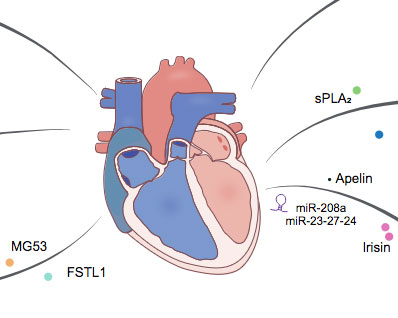Rafael Romero-Becerra, Ayelén M. Santamans, Alba C. Arcones & Guadalupe Sabio.
The heart, once considered a mere pump, is now recognized as a multifunctional metabolic and endocrine organ. Its function is tightly regulated by various metabolic processes, at the same time that serves as an endocrine organ, secreting bioactive molecules that impact systemic metabolism.
In recent years, research has shed light on the intricate interplay between the heart and other metabolic organs, such as adipose tissue, liver, and skeletal muscle. The metabolic flexibility of the heart and its ability to switch between different energy substrates play a crucial role in maintaining cardiac function and overall metabolic homeostasis. Gaining a comprehensive understanding of how metabolic disorders disrupt cardiac metabolism is crucial, as it plays a pivotal role in the development and progression of cardiac diseases. The emerging understanding of the heart as a metabolic and endocrine organ highlights its essential contribution to whole-body metabolic regulation and offers new insights into the pathogenesis of metabolic diseases, such as obesity, diabetes, and cardiovascular disorders.
In this paper, we provide an in-depth exploration of the heart’s metabolic and endocrine functions, emphasizing its role in systemic metabolism and the interplay between the heart and other metabolic organs. Furthermore, emerging evidence suggests a correlation between heart disease and cancer, indicating that the metabolic dysfunction observed in both conditions may share common underlying mechanisms. By unraveling the complex mechanisms underlying cardiac metabolism, we aim to contribute to the development of novel therapeutic strategies for metabolic diseases and improve overall cardiovascular health.







